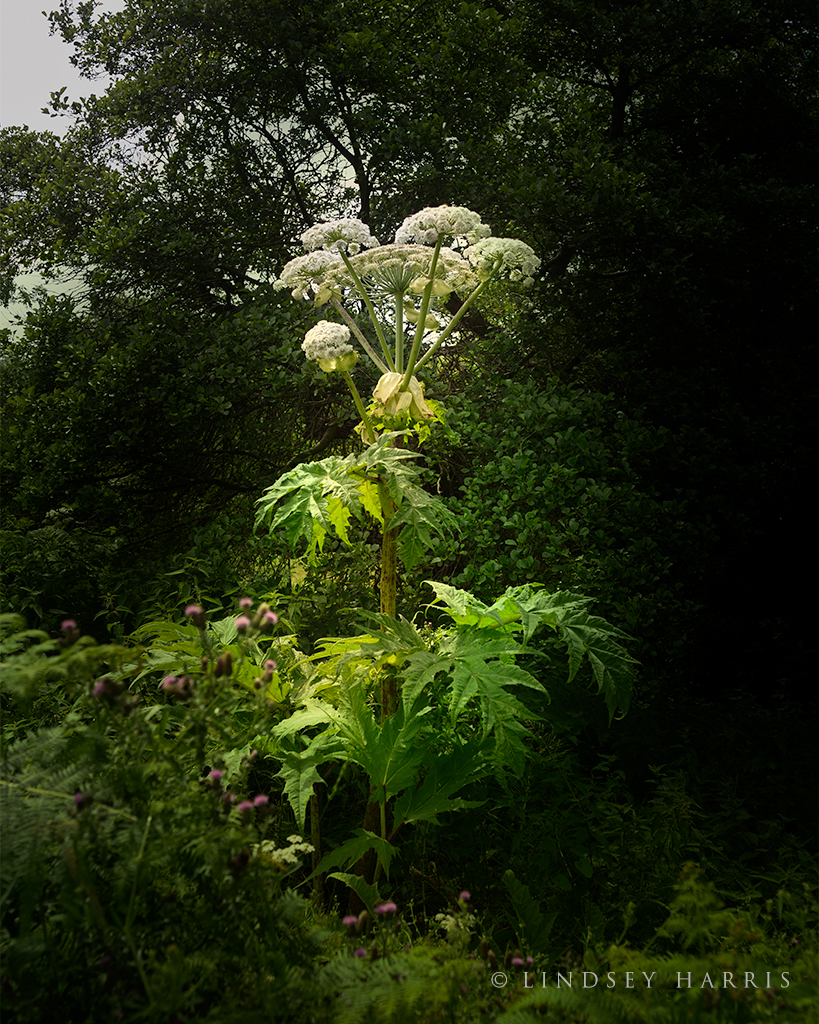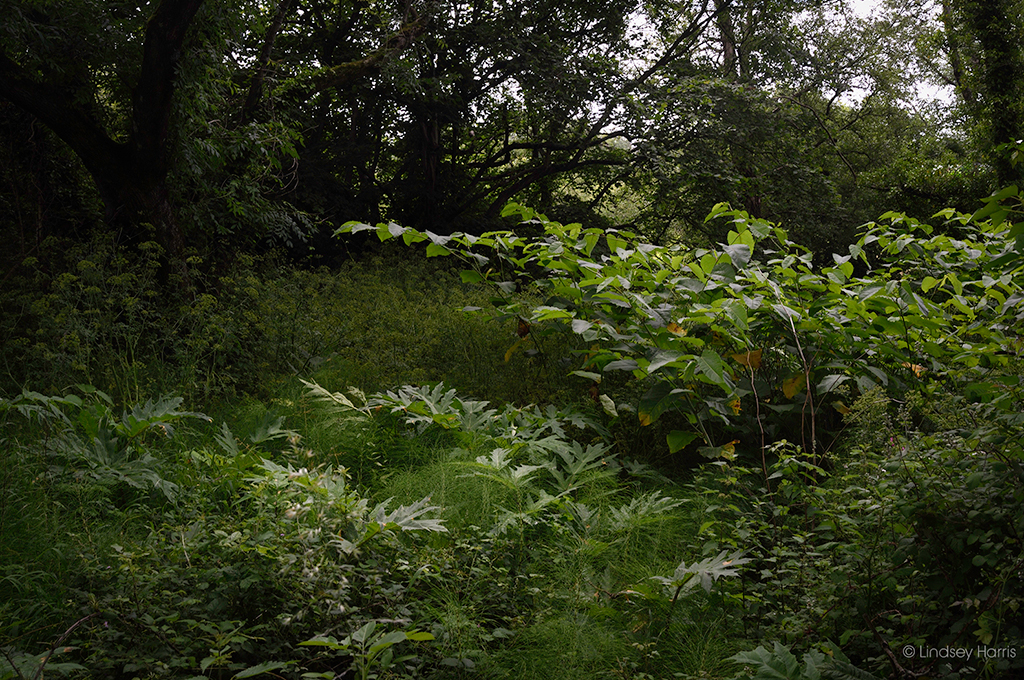
Giant hogweed growing in Dorset – July 2021.
Giant hogweed (Heracleum mantegazzianum) is not a native plant, having originally been introduced to Britain from Southern Russia and Georgia. This impressive umbellifer can reach over 3.5m (11.5ft) in height, with flower heads sometimes as large as 60cm (2ft) across.
Much is made in the press of the ‘danger’ of Heracleum mantegazzianum, with attempts being made by local authorities to eradicate it completely from the wild. This is due to the irritant effect of the giant hogweed sap on the skin, causing photodermatitis, or photosensitivity. This can result in severe skin burns, depending on the person’s sensitivity. The skin may also become very sensitive to sunlight for years on end, causing blistering, pigmentation and long-lasting scars.
How to recognise giant hogweed
Much larger than cow parsley, which is the same family, giant hogweed can be recognised by its massive, jagged leaves and thick, purple-mottled stems with bristles. Once you see giant hogweed it is apparent that it’s not cow parsley, particularly as the basal leaves can sometimes be as much as 1m in size. In fact, the first time I encountered giant hogweed in Dorset was in July 2021.
Heracleum mantegazzianum flowers from June-August, but mostly in July. Spread by seed, it is a member of the carrot family, Apiaceae. Some plants are biennial (flowering every two years) and some are perennial.

Where do you find giant hogweed?
Giant hogweed is usually found growing near lowland streams and rivers or on wasteland, but grows best in partial shade, although it sometimes it encroaches into the edges of crop fields. RHS research shows that Britain has as many as four types of giant hogweed and the sap of all of these poses a risk to the unwary.
The law and giant hogweed
The Wildlife and Countryside Act 1981 (as amended) lists it on Schedule 9, Section 14, which means it is an offence to cause giant hogweed to grow in the wild in England and Wales. Similar legislation applies in Scotland and Northern Ireland. Occupiers of the land where giant hogweed grows can be required to remove it/prevent spread, or face prosecution under Anti-Social Behaviour Orders. The plants must either be burned or composted, or disposed of in licensed landfill sites with the correct documentation.
Should plants be destroyed because of ‘scaremongering’?
Personally, I don’t agree with plants being destroyed just for the sake of it, because I think people should be educated from an early age not to touch or pick things that they are unfamiliar with. Destroying them, due to a perceived threat, is not the way forward. I do, however, agree that controlling invasive plants, so that they do not take over an area, may be required.
In most cases I truly believe that wild growing specimens should be left where they are, not cut down, and definitely not be dug up or picked and taken home.
Two of the UK’s most hated plants UK growing together…
There doesn’t seem to be much giant hogweed in Dorset, but what there is is pretty impressive to look at. One of my photos shows some Japanese knotweed (Reynoutria japonica) growing close to young giant hogweed plants. These two are possibly the most hated plants in the UK!
Young giant hogweed plants (middle and left) and Japanese knotweed (middle and right) – growing together in Dorset. Two of the most hated plants in the UK!
Heracleum mantegazzianum information sources:

A young giant hogweed plant growing in Dorset. Note the purplish-mottling on the stem.

